Intel D975XBX: Intel brings their Bad-Axe to Market
by Gary Key on January 26, 2006 12:05 AM EST- Posted in
- Motherboards
Basic Features: Intel D975XBX
| Specification | Intel D975XBX |
| CPU Interface | LGA775-based Pentium 4, Pentium 4 XE, Celeron D, and Pentium D processors |
| Chipset | Intel 975X - MCH ICH7R - ICH |
| Pentium D Support | 820D, 830D, 840D, 840EE, 920D, 930D ,940D ,950D , 955EE |
| Front Side Bus | 1333 / 1067 / 800 / 533 MHz |
| Host Burn-In Mode | 0 - 30% (in 1 percent increments) |
| Memory Speeds | Default, DDR-2 333, 400, 533, 667, and 800MHz |
| PCI Bus Speeds | Default, 40.00MHz |
| PCI Express Bus Speeds | Default, 101.32, 102.64, 103.96, 105.28, 106.6, 107.92, 109.24MHz |
| Set Processor Multiplier | 12 to 40, (in 1 step increments) |
| Core Voltage | Default, 1.2750V to 1.6000V (in 0.0125V increments) |
| DRAM Voltage | Default, 1.80V, 1.90V, 2.00V, 2.10V, 2.20V |
| MCH Chipset Voltage | Default, 1.525V, 1.600V, 1.650V, 1.725V |
| FSB Termination Voltage | Default, 1.271V, 1.333V, 1.395V |
| Memory Slots | (4) x DIMM, max. 8GB, DDR2 667/533/400, non-ECC, ECC, un-buffered memory |
| Expansion Slots | (2) x PCI-E x16 (operates in 1x16 and 1x8 or 2x8 mode) (1) x PCI-E x16 (operates in x4 mode) (2) x PCI 2.3 |
| Onboard SATA | Intel ICH7R: (4) x SATA 3Gb/s |
| Onboard IDE | Intel ICH7R: (1) x UltraDMA 100/66/33 |
| SATA/IDE RAID | Intel ICH7R: (4) x SATA 3Gb/s RAID 0, RAID 1, RAID 5, RAID 10, and Intel Matrix Storage technology Silicon Image SiI 3114: (4) x SATA 1.5Gb/s RAID 0, RAID 1, RAID 0+1 (operates on PCI bus) |
| Onboard USB 2.0/IEEE-1394 | (8) USB2.0 ports (2) IEEE 1394a FireWire Ports by TI TSB43AB23 |
| Onboard LAN | Intel 82573L PCI-E x1 Gb LAN |
| Onboard Audio | Sigmatel STAC9221D, 8-channel capable HD Audio Codec featuring Dolby Master Studio technology |
| Power Connectors | 24-pin ATX 4-pin 12V Plug 8-pin EATX 12V |
| Back Panel I/O Ports | 1 x PS/2 Keyboard 1 x PS/2 Mouse 1 x Parallel 1 x Serial 1 x Audio I/O Panel 1 x Optical S/PDIF Out Port 1 x Coaxial S/PDIF Out Port 1 x RJ45 4 x USB |
| Other Features | Value Added Software: Intel® Audio Studio Intel® Desktop Utilities Intel® Desktop Control Center InterVideo* WinDVD* Ulead* VideoStudio* 9 SE DVD InterVideo* MediaOne* Gold Musicmatch* Jukebox Farstone RestoreIT!* Gold Farstone Gamedrive* Norton* Internet Security Norton* AntiVirus Yahoo!* Toolbar with Anti-spy |
| BIOS | Intel 0420 (01/05/2006) |
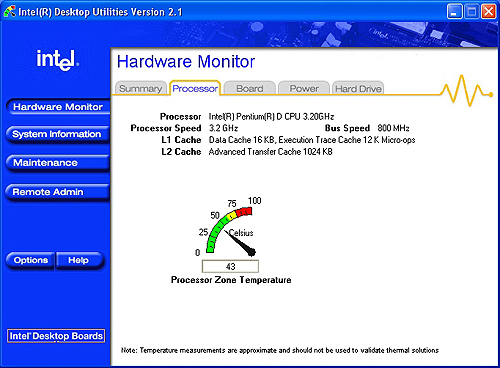
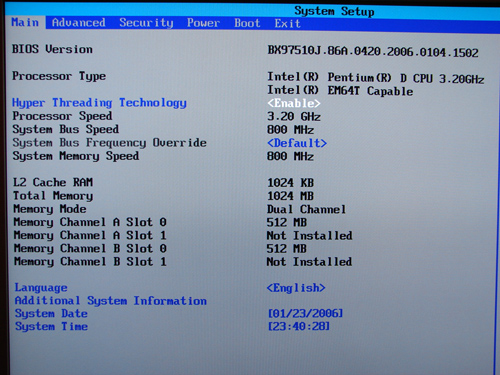

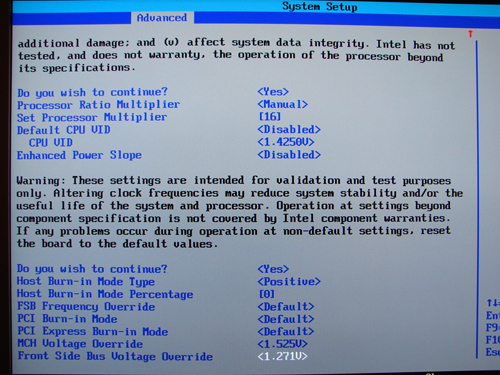
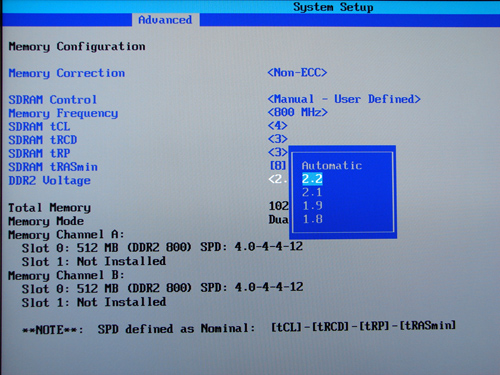
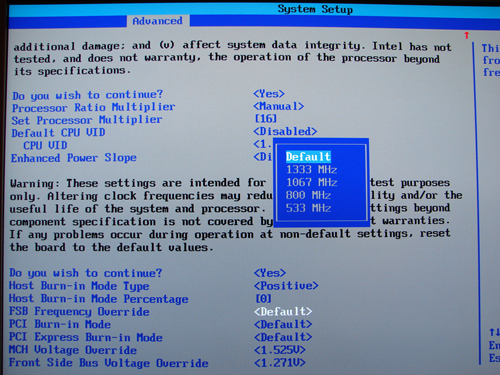










34 Comments
View All Comments
Gary Key - Saturday, February 11, 2006 - link
Actually, depending upon the device PCI-E does support single-ended transfers. I probably should have worded my statement differently.
Bozo Galora - Thursday, January 26, 2006 - link
http://img264.imageshack.us/my.php?image=intoilet3...">http://img264.imageshack.us/my.php?image=intoilet3...Zebo - Friday, January 27, 2006 - link
It's pretty sad Garys great article is'nt being read more - only 16 replies almost two days later - he can blame intel and thier non-exciting chips ATM.Gary Key - Friday, January 27, 2006 - link
I should have put "Conroe Comes to Town" in the headline. ;-) At least the board is showing the 1333 fsb setting, hint, hint. Intel's products are a little mundane at the moment but at least we have 20 replies now, anything less and I owed my dog a Big Mac.danidentity - Thursday, January 26, 2006 - link
Do you guys plan on doing a 975X motherboard roundup in the future? If so, when is it going to be ready?Gary Key - Thursday, January 26, 2006 - link
We have three more 975x boards to review. I estimate in about three weeks the roundup will be ready.
danidentity - Thursday, January 26, 2006 - link
Thanks Gary. Also, is there any word on whether 975X will support Conroe?Gary Key - Thursday, January 26, 2006 - link
We continue to ask this question. As soon as we have an answer it will be front page news. :-) This board officially supports the 1333 fsb that we will see on product launches this summer but whether they will respin the 975x or not is up in the air right now.
AGAC - Thursday, January 26, 2006 - link
The lack of performance, specialy when compared to an AMD similarly priced system should be compensated with a richer array of features. Looks like intel failed at that. Couple that with a higher energy bill, hotter/noisier computer and there you may explain why so many people now have AMD systems. For me, my last intel PC was a Pentium III. It was good for over 7 years, went from my home to my office untill a cheaply configured Sempron recently put it out of it's duties.AGAC - Thursday, January 26, 2006 - link
Can enyone tell me why? Is this "William Shakespeare inside" some spiner's new trend? And while we're talking about intel's marketing strategy what's all the hype with this viiv thang?